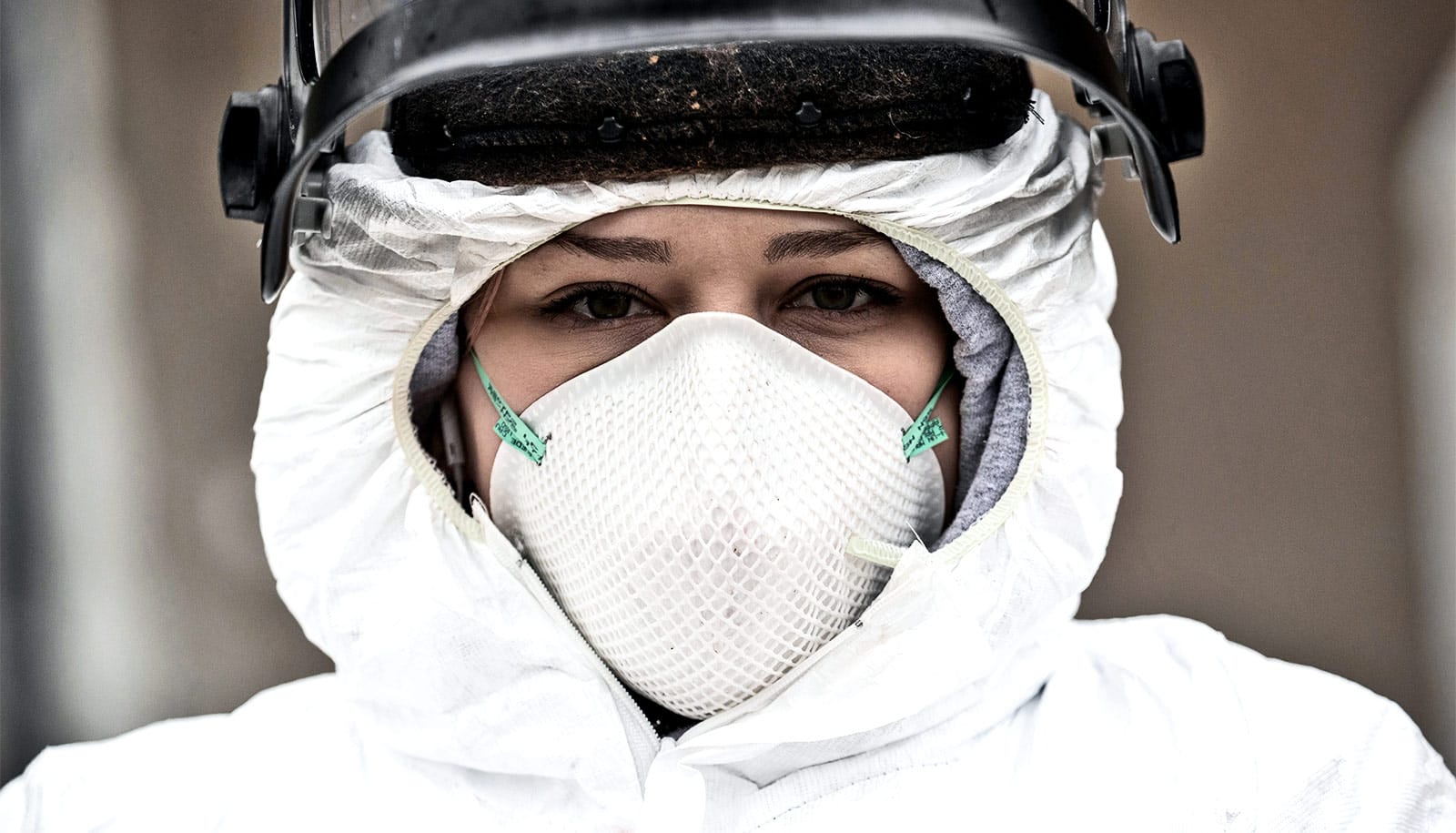Nurses of color are suffering disproportionately from emotional distress, induced by fears COVID-19 has engendered and reactions to workplace racism.
Researchers are calling the phenomenon a “dual pandemic” because of the severity of the effects of coupled factors.
The study in Behavioral Medicine is one of the first of its kind to quantify such effects and points to a critical need to address the issues of frontline health workers as the pandemic continues.
“We found that variations in nurses’ emotional distress were determined, in part, by direct and complex interactions among COVID worry, race, and workplace racism experiences,” says lead author Charlotte Thomas-Hawkins, an associate professor of nursing science at Rutgers University.
“For nurses of color in our study, workplace racism and COVID-19 represented a dual pandemic; that is, their experiences and worries were synergized to the detriment of their emotional well-being.”
Thomas-Hawkins, who is also director of the Center for Health Services Research and Policy, has long wanted to explore the effects of racism in the health care sphere due to her own adverse experiences over decades working as a Black nurse.
But key events in 2020 focused her thoughts on their outsized effect on populations of color—the advent of COVID-19 in the New York metropolitan area in March of that year, and the tragic murder that May of 46-year-old George Floyd by a police officer in Minneapolis during an arrest.
Health statistics also guided her, showing that Black, Hispanic, and Asian people in the US experienced the highest rates of COVID-19 cases, deaths, and hospitalizations. Studies also showed that nearly half of all confirmed health care worker cases of COVID-19 infections, deaths, and hospitalizations were occurring among workers of color. In addition, nurses were the hardest hit among all health care workers.
The interplay of these two forces in American life and their impact on people, she believed, necessitated investigation. “COVID-19 and race in both the US general population and the healthcare workforce are inextricably linked,” Thomas-Hawkins says.
In September 2020, during a lull in the COVID pandemic, researchers surveyed nearly 800 nurses working in acute care hospitals in New Jersey. Participants completed online questionnaires that asked about indicators of emotional distress, COVID-19 worry and concerns, workplace racial climate, workplace racial microaggression experiences, and demographic information.
Participants were asked how worried they were, generally, about COVID, how concerned they were about becoming infected, and how likely it was that someone they knew might become sick from the virus.
Questions on experiences with racism focused on whether there were limits to advancement on anything from work opportunities to unwelcoming climates. They were also asked about microaggressions and bias incidents, such as insults, slights, and discriminatory behaviors.
The study concluded that:
- Nonwhite nurses reported significantly higher levels of emotional distress and overall worry about COVID.
- A higher percentage of nonwhite nurses (61%) were very worried about COVID compared with the percentage of white nurses (41%) who were very worried.
- Nonwhite nurses perceived more negative racial climates, with Black nurses reporting the most negative climates.
- Nonwhite nurses experienced more racial microaggression experiences, and Black nurses experienced the highest number of racial microaggressions compared with all other racial groups.
If the health care industry is going to be successful in diversifying its workforce, the pressures examined in the study are important to understand and address, Thomas-Hawkins notes.
“The psychological effects of nurses’ workplace COVID exposure and worry will likely last far into the future,” Thomas-Hawkins says. “And the persistence of workplace racism will continue to inflict individual-level psychological harm among nurses of color unless it is effectively ameliorated.”
Source: Rutgers University



